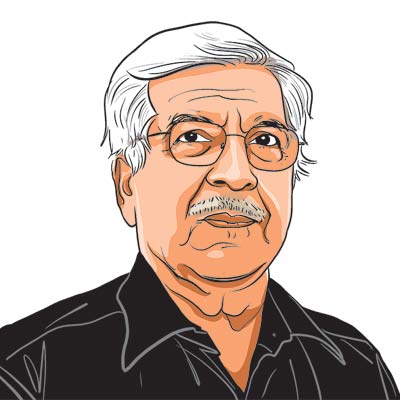Opinion No trade-off here?
The RBI must not ignore the inflationary pressure of growth.
In the recent economic arguments in the budget papers if one includes in them the budget speech,the Economic Survey and the FRBM Statements there is a fascinating aspect which is both new and welcome. This is a perspective of India as part of a global financial entity. This is of larger interest since economic policy will need discussion as the year and its pressures continue. By the ides of March,as monetary reviews begin,the growth scenarios are moderated and foreign inflows are seen as lessening. Very interesting statistical pictures are now given,including in the Economic Survey,of India at a global cross-section,where the country is a speck in a global line and therefore lends itself to what it would be if it follows the global experience. For a people who have always looked inwards,this is a necessary widening of their lens in terms of visualising possibilities and dangers. It perhaps would be equally rewarding to add on to this understanding the Indian experience in globalisation,since we have been at it for well over 20 years now,and if one underplays a brief period,a longer century as an open economy.
Begin with the interesting point that 42 per cent of rural savings and 23 per cent of urban savings are held as cash. The survey makes the point that with the spread of financial institutions,this will get monetised. It then says it can lead to inflation. But the spread of monetisation of the Indian economy goes back to the period when India decided to nationalise its banks. One of the great arguments then was that apart from the hanky-panky the private owners of banks were doing,the spread of banks in rural and small towns was abysmal and nationalisation would correct that,which it did. There is solid econometric work to show that the level and structure of savings can be explained by that. These arguments will be important for the RBI on March 17.
Since there have been different periods of inflation,obviously policy reacted to this welcome trend differently. Logically I can think of a similar argument. The argument that a younger population will increase savings rates in India needs to be re-evaluated since our savings rates went up when our age structure was not changing. Similarly increased inflation is not inevitable with increased monetisation of savings,since other things dont have to be the same. It would be interesting to examine what Indian policy-making did for earlier periods of monetisation and low inflation. This will help the RBI to assess what the saver will do as FII assets become scarcer.
A more compelling argument is that as wages and prices adjust to some sort of hamburger/ purchasing-power-parity global index,India will face inflationary pressures. There is probably a lot of truth in this as a really long-term trend although there is a Kuznets argument that different countries will grow in different profiles depending on their cultural history. He saw Italy valuing goods and services differently as compared to others. How smooth the process depicted in the Economic Surveys chart will depend on a host of factors. One of the major distorting factors in the current poverty debate,for example,is the use of current World Bank norms which are built on PPP price adjustments since they dont have price adjustment series separately for the poor in poor countries and dont even use them when they are available as in India. The relevance of hamburgers for valuing the basket of consumption of the rural Indian poor is not quite clear to me. Income distribution changes will obviously be a factor in our transition to the global adjustment path.
But the more interesting approaches in India would be the work of scholars like the late Manohar Rao at the Bombay School of Economics where he modelled the transition from a controlled economy to a globalised one and worked out the transition paths using control theory. Rao saw the process taking time which emerged from his macro-models. The tradition continues and some recent work by the Reserve Bank researchers shows that for low inflation the growth rate will not be higher than 7 per cent annual. There are more robust models,including straightforward inflation growth trade-offs,by Guha and me and by the Institute of Economic Growth macro-modellers,but they would suggest that we have inflation-fighting strategies involving businesses and alas trade unions,which is pushing the dominant thinking in policy-making too far.
The budget stays away from all that and needs to be complimented on its honesty for that and the survey correctly keeps the homilies on social trust at a rhetorical level. Will the RBI again only decry the fiscal overhang or carry the debate forward?
The writer,a former Union minister,is chairman,Institute of Rural Management,Anand,express@expressindia.com





